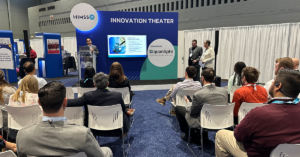As the influx of big data in healthcare continues to grow and organizations shift towards more patient-centric models (see our blogs on value-based care), it will be critical that organizations start to recognize “hidden data gems,” the valuable but underleveraged and ever-expanding trove of data that is available in today’s healthcare ecosystem.
In the first of a two-part Q&A with Virginia Long, PhD, Predictive Analytics Scientist at MedeAnalytics, she explains what hidden data gems are, and explores the frequently missed types and common challenges organizations face when leveraging the right data.
Q: What exactly are hidden data gems?
A: Hidden data gems may be as simple as regularly collected data that has not yet been used; this type of data can be used to help understand a question that has not been asked before. They can also be in the form of latent or proxy variables that can give information that is not directly measured. Like any data collection process though, it is important to determine how it relates to a business question in order for it to be valuable. You can have terabytes of data but if it has no bearing on the question that you are asking, it will make no difference nor give you the insight you need. To paraphrase the famous John W. Tukey quote, no amount of wishful thinking is going to make your piles and piles of irrelevant data relevant to your question.
Q: What hidden gems can give health plans and providers better insight into patient care?
A: If healthcare organizations are truly interested in moving toward “patient-centric care,” then they need to be concerned with gathering data about their patients that encompasses more than a claims record. This is precisely the idea behind the recently released eGEM study featuring data from Kaiser Permanente Colorado where researchers collected additional data from new members. Datasets that offer health plans and providers patient-centered care insights will naturally need to encompass person-centric data that is not in a claims record, such as a patient’s attitudes about health. These attitudes arise from cultural, social, environmental, psychological and financial contexts. They inform the individual’s ability to engage with their own health, make beneficial or detrimental behavioral choices, and lead to insight into how to best reach patients or tailor services.
Q: If you find these data gems, are there challenges organizations commonly face when leveraging the right data?
A: “Leveraging data gems” is indeed the difficult part in all of this. If you are lucky enough to find that your healthcare data contains some interesting predictive factors, making that information understandable and usable to the organization is going to be the next challenge. The first step is identifying who can utilize the information to the best benefit. The second step is understanding how this information should best be consumed by those persons and designing a mechanism for disseminating the information. Finally, organizations should achieve buy-in to create a system where the information is used in a practical sense to inform strategy, outreach, program or policy changes.
Q: How does MedeAnalytics help organizations target and leverage data gems?
A: The MedeAnalytics platform brings together client data into a single repository where the data can be viewed, filtered and grouped. Our platform gives clients access to the data in ways that are user friendly and help them make data-driven decisions. There are also a number of tools on the platform that can present the data in ways that directly map back to key business issues. For example, exploratory data analysis can be done in MedeAnalytics by using the chart builders to examine groups and patterns over time. A new feature called the Statistical Toolbox can be used to generate descriptive statistics on any numeric column of data. The disease-cost forecasting tool enables users to visualize historic costs and uses times series analysis to display estimated costs for an upcoming time period. The self-pay predictive model is also a very useful tool for many of our clients as insurance deductibles continue to rise.
The second part of this series will delve deeper into the researcher’s findings and possible limitations within the eGEM study as well as the promise of predictive analytics tools.
Get our take on industry trends
Best practice tools to build an integrated approach to multimorbidity
The traditional model of treating single diseases no longer works. Data collected from 2016 to 2019 indicated that 32.9% of…
Read on...Will adopting a risk-based approach with augmented analytics support care gap closure?
A common challenge for healthcare systems is how to properly segment its patient populations based on risk profiles and co-morbidities. Doing this well ensures a high quality of care delivery and superior patient outcomes.
Read on...4 questions healthcare executives are asking about augmented analytics
At our annual Impact Summit, I had the privilege to talk about augmented analytics and address questions from healthcare executives—many…
Read on...


